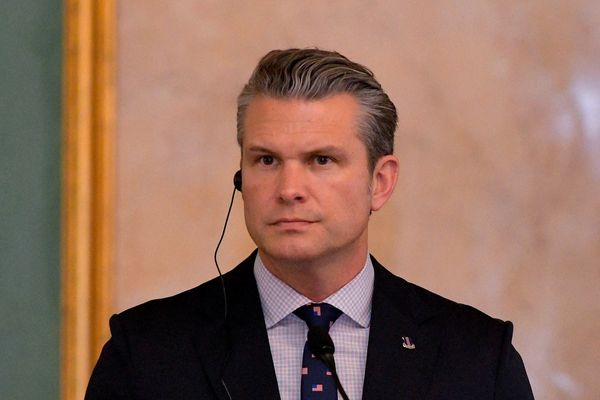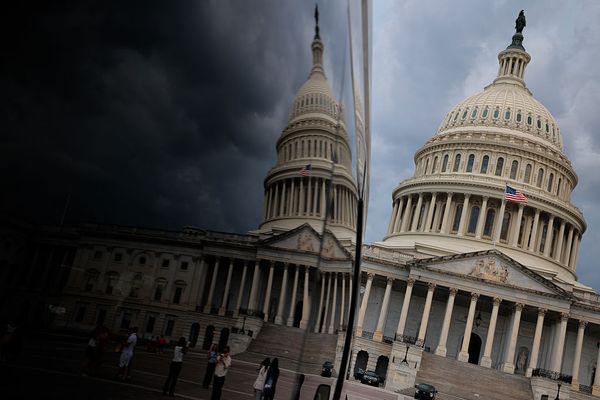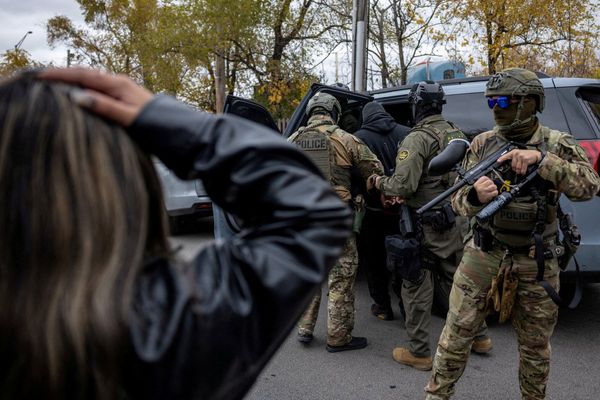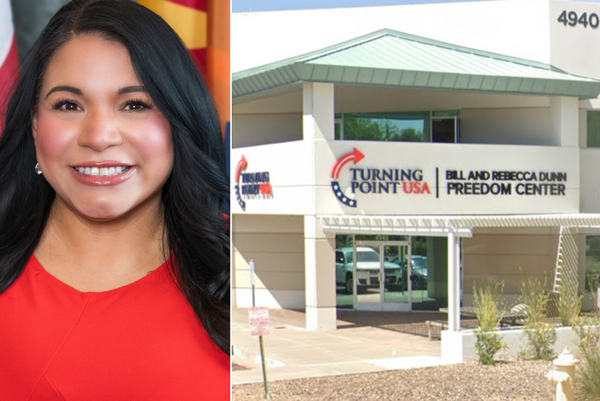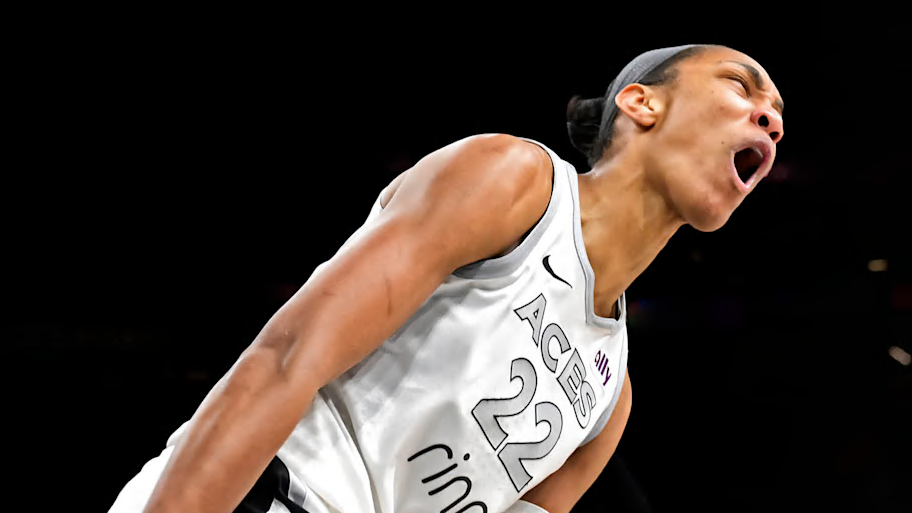
PHOENIX — The Aces developed a taste for the circuitous this season. They frequently spoke of winding roads and rollercoasters. There was a sense that nothing went as expected for them in 2025.
In the end, however, the path straightened out.
The Aces did not trail for a moment of their 97–86 win in Game 4 of the WNBA Finals to sweep the Mercury. Las Vegas’s third championship in four years was the first in which it went undefeated during the Finals. Reigning MVP A’ja Wilson was named Finals MVP: The best player in the league was at her best when she had to be. It was the most straightforward way possible to win a title.

Which felt diametrically opposed to everything that got them to that point. Vegas was not in a playoff spot when the calendar flipped to August. A roster built to contend was instead struggling to stay at .500. And then everything turned. The Aces followed one of the most dramatic losses in league history with one of the most dramatic winning streaks. They climbed back into the playoff picture and then all the way up the standings. But they got reacquainted with struggle in a hurry: Vegas was pushed to an elimination game in the first round of the postseason and then again in the semifinals. It came within one possession of being knocked out twice.
And then came that straight last bit of road en route to a championship, no detours, potholes or wasted time once in the Finals.
It challenged their coach more than any of her previous championships had. It required their best player to take more ownership of their group. And it required every other member of the team to put in the work to go along with them.
“We went the distance with this team,” Aces coach Becky Hammon said. “We’ve been joking around saying this team likes to go the long way around. Just because you’re taking the long way around doesn’t mean it’s the wrong way around.”
At the beginning of this season, Hammon gave each of her players a potted plant. The coach has a healthy love of metaphor: There is perhaps no one in the league who is more likely to pull out a prop or use a complicated example to get her point across. (“Becky always has something, man,” said Aces forward Kierstan Bell.) She felt that she had a strong one to start the year. After winning back-to-back championships in 2022 and ’23, the team had gotten complacent and occasionally sloppy in ’24, failing to make it back to the Finals. Hammon wanted to start this season with something to communicate the power of consistent, daily work, similar to caring for a plant.
She had no idea how useful the metaphor would prove. It just worked a bit differently than she had expected.
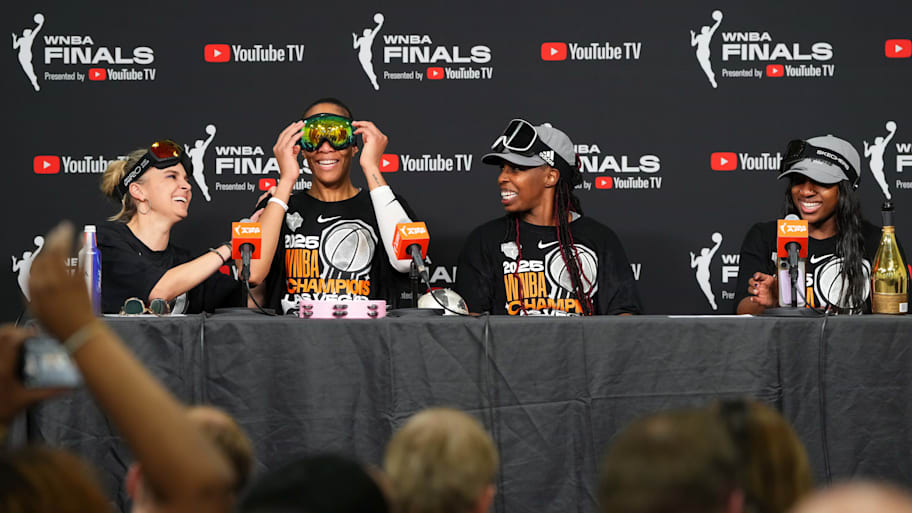
The Aces dropped their first game of the season in the sort of performance that would come to feel agonizingly familiar over the next few months. They came out strong before finding themselves down at halftime by double digits, which spurred a furious attempt at a comeback, only to completely fall apart down the stretch after a win had been within reach. That would happen over and over in the first half of the season. They never looked uniformly terrible. But they were so uneven as to feel inscrutable. Vegas beat good teams and lost to bad ones and then scrambled that combination. The Aces made it to the All-Star break without ever winning three games in a row.
“It felt like our losses were self-inflicted. It felt like we had control over it, and we just did not show up,” Wilson said. “And when you know you could be better, that’s the worst type of losing.”
They could not pinpoint any specific cause of their problems. No especially difficult injuries, no single consistent weakness, no obvious solution worth targeting in practice. It was everything and nothing. This core had been together for years: It was Wilson’s fifth season of starting alongside the guard duo of Jackie Young and Chelsea Gray. But nothing seemed to work the way it once did. Hammon found herself saying the same thing over and over when people texted or called to check in with her: This team is going to be the death of me. She found herself toggling between needing to give them a kick in the ass and needing to give them a hug.
Hammon kept coming back to the plants. But she tweaked the messaging. Perhaps the more appropriate metaphor was about roots taking hold beneath the surface, about faith in growth that might not always be obvious, about pushing up through heavy soil.
“She had this whole thing about either being planted or being buried,” said Aces center Kiah Stokes. “Like: This is either our time to show if we’re buried, and that’s it, or if we were planted to grow into something else.”
The difference between being planted and buried can be a matter of perspective. In retrospect, there is a clear, coherent narrative for this season that has its turning point on Aug. 2, when the Aces lost to the Lynx by a score of 111–58. The defeat was just a few buckets shy of the worst loss in the history of the WNBA. That led to a furious motivational team group text from Wilson, starting with, If you weren't embarrassed from yesterday, then don't come into this gym. And it was followed by a historic victory streak. Vegas won 16 straight to end the regular season and zoomed up to take the No. 2 seed. Looking back, that seems as clean and clear as flipping a switch, one easy movement to slide from off to on. But that shift was not so obvious in real time.
It felt instead more like the growth of a plant. The day-to-day change was not always obvious. It was happening all the same, however, and soon it was impossible to ignore.
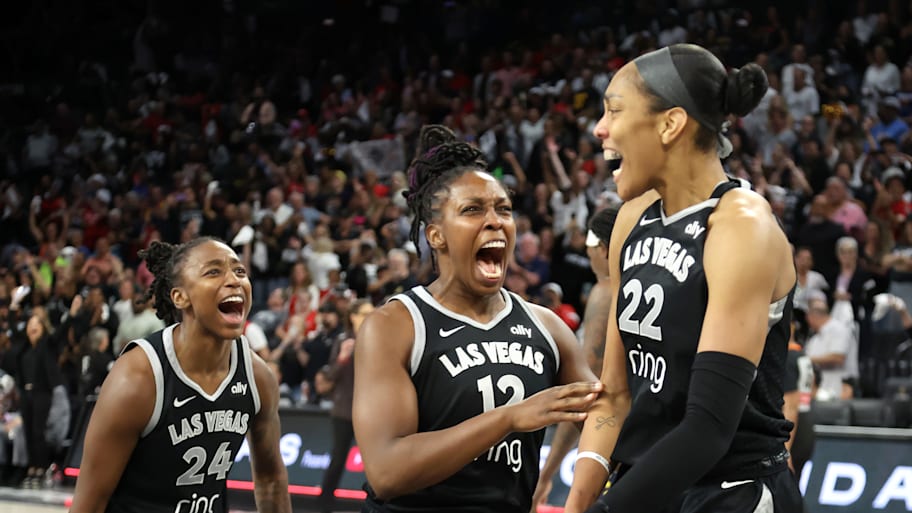
The loss to the Lynx was the worst moment of the season for the Aces, statistically, but it was not their only demoralizing loss. (“Obviously, everyone points to Minnesota… I could point to three or four games,” Hammon said, noting particularly bitter defeats and sour film sessions at the hands of Indiana and Seattle.) At that point, they had already begun to make some of the changes they would need to start turning it around. A few games earlier, Team USA Olympic guard Jewell Loyd volunteered to start coming off the bench to provide a spark, a role that she would stay in for the rest of the season. And Hammon had already begun considering how this group would start taking on more ownership of its performance.
The coach landed on something that surprised all of them. Hammon was going to have the Aces do their own scouting reports going forward. The players would take on all of the work there and share it with one another without the coaches in the room. Hammon and her staff would then come in and share their perspective to align on a game plan.
She had never handed quite so much responsibility to a team before. But she had never had a group that she thought would benefit from it as much. Hammon believed Vegas had all the raw tools and talent it needed to win. She just needed the players to start buying in and holding each other accountable on the floor.
Most of the players had never taken on full scouting responsibilities. (Returning players had certainly never done it on the Aces.) It was a stretch for some of them; Hammon did not take on all (or even most) of their suggestions. But the practice changed the culture of the group. It required more time watching film and breaking down strategy together. It offered a platform for every last member of the roster to contribute. And Hammon asking them to do it felt like a sign of her belief in them.
“Becky trusts us, and I think she knows that it helps when we do those things together,” said Aces guard Dana Evans, who came to the Aces in the offseason through a trade with the Sky. “Then we can pick each other’s mind. We can say, Why do you feel we should do this? And then it just kind of helps with the dialogue and game-planning, and I feel like with chemistry, as well. It helped that you heard people’s voices that you don’t always hear.”
Those players-only scout meetings soon became a place for more than just breaking down film.
“Sometimes you kind of get used to just the coaches doing all the work, trying to motivate people, giving stories, the speeches, everything,” said Loyd, also new to the team this season. “It hits different when it comes from your team. It’s personal ... People are getting more vulnerable in the locker room, opening up, and I think that’s when we all just opened up to each other a little more. We kind of just used that as a bonding mechanism, and it allowed us to just really buy into everyone’s story, with a lot of stuff to hold ourselves accountable on and be more vocal and take some ownership.”
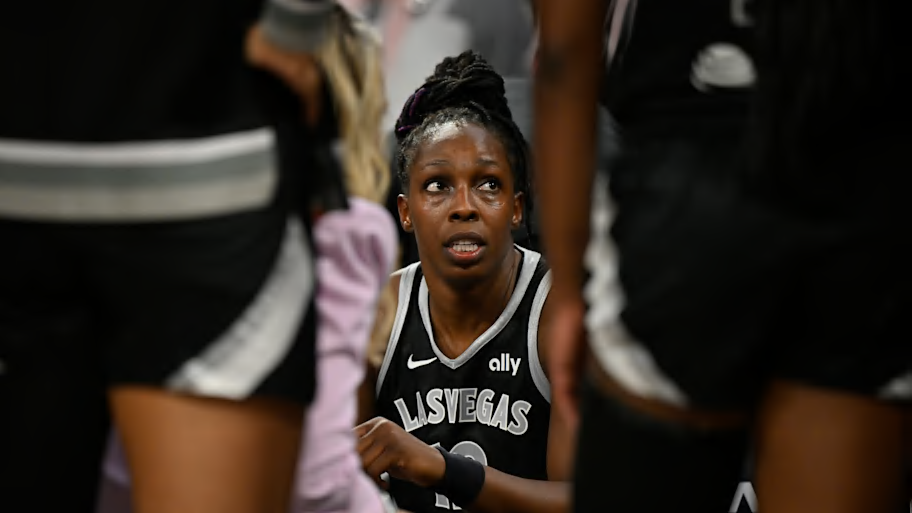
There were some natural leaders in those sessions. Gray, their point guard, has always been a perceptive play-caller: She has a dry-erase board all her own to use during huddles. (“You have a brain like that, you just let it go,” Hammon said. “You don’t try to harness it. You just let her be her creative self and let her eyes do the work.”) There were generally key defensive insights from veteran lockdown specialist Stokes. But there was no one who engaged here like Wilson.
The 6' 4" center has spent the last few years steadily building her case as the best player in the WNBA, expanding her skillset in terms of breadth and depth alike, with a remarkable knack for making complicated actions look easy. She took on an increasingly big leadership role in each of Vegas’s previous two championship runs: Wilson had to grow into the idea that sometimes taking control of a situation by herself is the best way to help out her teammates. But she leaned into that concept more than ever in 2025.
Wilson used to think of team film sessions as a place for her to watch and listen. That had to change this season. She began coming in with her tablet and keyboard. First, it was simply for notetaking, and soon, it was to more easily share the notes that she had already taken watching film alone before the group session.
“She became even more of a student of the game,” said Aces assistant coach Charlene Thomas-Swinson. “She stepped out of her comfort zone to be able to assist. … She had to have the patience to teach from a player perspective, and it meant something to have those two lenses or voices, one from Becky, another from her.”
Wilson’s tablet became something of a team joke. When she plunked her bag down on the table at a postgame news conference, Hammon asked if her computer was in there. “A’ja’s just always on her little laptop, typing away, giving us ideas,” Aces rookie Aaliyah Nye said when asked to describe her WNBA film experience. They all know the stickers on the case by heart: The big one in the middle reads I Might Cry But I’m Gonna Be Okay. “She writes everything down now,” said Stokes, who has been Wilson’s teammate for five seasons. “I definitely had not seen that side of her.” But they only razzed her about it because it had worked so well.
She had watched film more carefully and worked through more ideas and then shared them with her teammates more openly. It made Wilson a natural choice to head up those player scout meetings: “A’ja’s done a great job of leading those every single time,” said Gray, who realized that even as their floor general, this was ground she needed to cede to her teammate. It made sense with the way her game has developed. Wilson had the highest usage rate in the WNBA this season. Everything the Aces do runs through her. As her talents have expanded, she has become more versatile and more mobile, far more than simply an inside threat. She has come to break the game down more cohesively and more coherently by necessity. And she now had to share that vision with her teammates.
“Seeing your leader be that dialed in, that focused, it just shows that everybody needs to be that dialed in,” said Aces forward NaLyssa Smith. “Because if she’s doing it, then it’s like, we need to do that 10 times more.”
There was a plant analogy here, too. “Sometimes a plant doesn’t grow to specification,” Thomas-Swinson said. “It needs water, sunlight, but there are definitely intangibles.” Diligent, regular, by-the-book care does not always result in expected growth. A gardener might be surprised by what ends up working. Sometimes a coach lets the players do the scout and watches a season turn around.
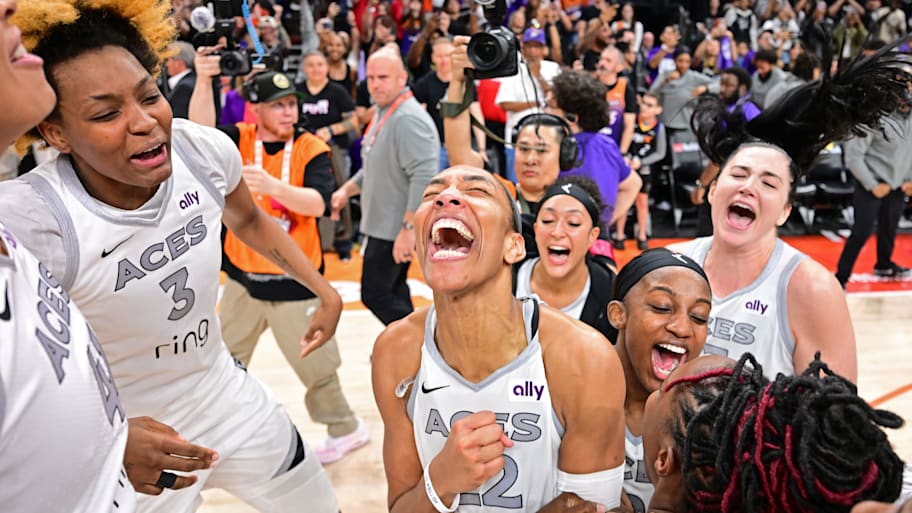
Hammon knows that some of her metaphors and examples can seem cheesy or excessive from the outside. She understands that her team of professionals did not embark on a historic midseason transformation because of some plants. But she also realizes that cheesy, potentially excessive things can sometimes work, and a coach never knows for certain just where a connection might take root.
“She loves doing those types of things—examples, analogies, stories,” said Aces forward Megan Gustafson. “But she really helps relating it to us. If she’s trying to teach anything on the floor, she’s able to off-the-court relate it to something ... And each of us has a relationship with Becky. I think that’s what’s very important.”
That was in the plants, too. Hammon put a personalized message on each pot. She reminded Bell to look for the joy in every day. She told Evans to keep her spirits high. She told Nye to embrace all kinds of growth. The players saw those messages whenever they watered their plants. They set group bets on how long they would keep them alive: Most of them had never tried something like this before. (Plant care is not exactly compatible with the life of a professional athlete.) A few did, in fact, die; Bell was teased as the first one to see hers bite the dust. But more of them lived. Gray’s became part of her daily family life: Her toddler son, Lennox, says hello to the plant each morning as he helps water it. Gustafson named hers “Mavid” by mashing up her own name with that of her fiancé. And the trio of Wilson, Loyd and Young got to crow at a championship press conference about how they had all won their bets and kept theirs alive, too.
“I think we definitely bloomed,” Stokes said.
All of that led to a WNBA Finals that was a de facto showcase for Wilson. She averaged 28.5 points and 11.8 rebounds, plus one stone-cold game-winner, a postseason record for blocks and steals, and lockdown defense on Mercury first-team All-WNBA forward Alyssa Thomas. It left no question the four-time league MVP would get her second Finals MVP.
Yet it was striking how much of a cohesive group performance this was beyond her. The Aces got major bench contributions from Evans and Loyd. Gray had two performances with 10 assists. Young dropped 32 points in a transcendent Game 2. Stokes was asked to close out multiple games for defensive stops despite not logging any minutes otherwise. Every role was covered.
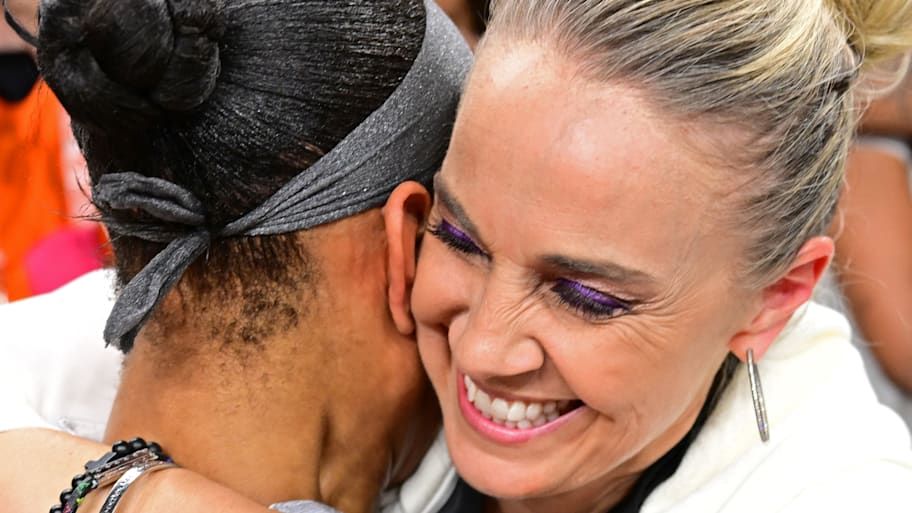
It was all the more impressive for how many pivots they made during the series. The Aces were nearly always playing with a lead, but they never got too comfortable, and Hammon kept ahead of that with constant adjustments. They never came out with the same defense twice: Their standard man switched to a zone at halftime of Game 1, which they moved away from in Game 2, only to experiment more with a box-and-one in Game 3 and a triangle-and-two in Game 4. In less capable hands, this easily could have looked too cute by half, or like tinkering for tinkering’s sake. For them it felt seamless.
“We went through the mud for this one,” Wilson said. “But like Coach always said, we weren’t necessarily buried, we were planted. And sometimes we had to let the soil get moisture, and then we had to grow.”
This title was not like the Aces’ past championships. It started much rougher and finished a bit smoother. The group agreed that made it sweeter.
“It’s probably been my toughest season as a coach,” Hammon said. “Not with anything to do with X’s and O’s. It was trying to help a group figure out who they are together and have the understanding that they’re better together. … It just took some time. You know, I think everybody wanted it to happen like that, and believe me, I did too, but it just doesn’t work that way.”
Hammon did not reach for any metaphor here, speaking about the importance of time and patience and small, daily efforts piling up to result in growth. But she did not have to. They all knew. Her team is now ready to fly back home to Vegas for a parade and championship rings and, of course, to water some plants.
More WNBA Playoffs on Sports Illustrated
This article was originally published on www.si.com as The Aces’ Long and Bumpy Road to Reclaim Their Spot Atop the WNBA.
